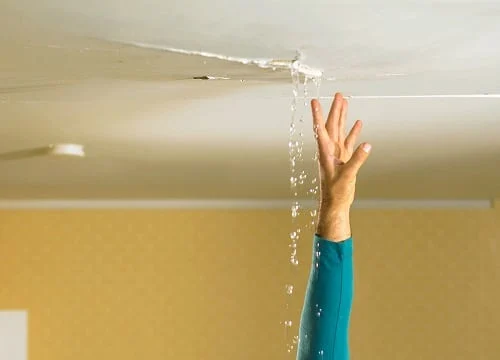Water Leaks Big and Small
The U.S. Environmental Protection Agency’s annual Fix-A-Leak week takes place every third week of March to promote water conservation by encouraging people to find and fix household leaks. Because leaks account for more than 1 trillion gallons of water waste each year, Fix-A-Leak Week is an annual reminder to check household plumbing fixtures and irrigation systems.
Leaks come in all shapes and sizes. Often we think only of combating the big leaks, but what about the small drips that start adding up? Sometimes the most costly leaks are the ones we overlook: dripping faucets, stuck toilet flapper valves, or leaking hot water tanks. Big leaks might be the biggest worry, but the aforementioned neglected common culprits can wreak havoc on a home, the environment, and your wallet. In fact, our insurance partners report that 40% of homeowners will suffer from water damage in their lifetime. Soon that one seemingly negligible drip becomes a flood.
Small Water Leaks
Small water leaks within your home can be a nuisance and lead to significant problems if left unaddressed. The most common culprits of small water leaks include leaking faucets, dripping shower heads, and running toilets, which are often caused by worn-out washers, gaskets, or seals that need to be replaced.
Toilet leaks are one of the most common sources of leaks within the home. Often these leaks go unnoticed as they tend to be silent and out of sight. The EPA estimates that toilet flushes account for nearly 30% of your average household water consumption per day, and on top of that, experts have found that 20-30% of household toilets are leaking. So odds are, you may have a leaking toilet! You can check for this by placing a few drops of food coloring into the toilet tank and waiting a few minutes to see if the color appears in the bowl. If so, this would indicate a leaky flapper valve. Replacing the flapper is a quick and easy fix that will save water and money.
Another area to monitor is the pipes themselves. Check exposed pipes regularly for any signs of moisture or rust. Inspect the joints and connections for signs of water seepage, and tighten any loose fittings if necessary. A pipe with just a 1/8 inch crack can waste up to 250 gallons per day. Regular maintenance and inspection of your plumbing system can help identify and address small leaks before they become bigger, more costly issues.
Big Water Leaks
Not detecting a significant leak can result in much more severe consequences. Big leaks can cause serious damage to your home through flooding, structural damage, mold growth, and damage to personal belongings. The most common causes of larger water leaks include burst pipes, irrigation leaks, and damaged or corroded plumbing fixtures. Burst pipes can occur due to high water pressure or freezing temperatures.
Pipes are at risk for freezing when temperatures drop below 32 degrees Fahrenheit, but most occurrences happen below 20 degrees. The pipes expand as the water freezes, putting tremendous pressure on them and often result in a burst pipe. While the weather is out of our control, check out these actions you can take to prevent freezing pipes from becoming a catastrophe.
Burst pipes are especially common in outdoor irrigation. An irrigation system with even a leak 1/32nd of an inch in diameter (about the thickness of a dime) can waste more than 6,300 gallons of water per month. Leaks like these increase your water bill and threat of damage, as well as put unnecessary strain on our planet’s precious water resources.
Big Impact
With so much of the world in a state of crippling drought, water is too precious to waste. Leaks are the biggest water wasters within the home, wasting up to 10,000 gallons of water per year. Multiply that by the number of households, and you’ve got a whopping 1 trillion gallons nationwide. That number is so large it can be hard to put into perspective, but that equates to the annual water use of over 11 million homes wasted.
Unfortunately, wasted water from leaks cannot be reused or recycled as contaminants raise a cause for concern. With the drop in pressure caused by a leak, surrounding groundwater is sucked into the pipe and remains as it travels through the network. This water may contain contaminants such as bacteria and viruses, which can result in water that is unfit for our consumption, negatively affecting the health of the community.
Additionally, leaks cause a lack of pressure in pipes, requiring more energy to replenish the lost water. As more fossil fuels are used to compensate for this difference in water pressure, both our energy costs and carbon footprint rise. Regardless of whether your leak is big or small, it generates a big environmental impact as our precious natural resources are depleted.
Flume
You can’t always stop a burst pipe, leaking faucet or a major leak from happening, but what you can do is stay one step ahead. While leaks may seem intimidating, Flume makes monitoring your water easy and convenient. With our smart leak alerts, you don’t have to let leaks drown you with every drop. As soon as Flume detects a leak, you are alerted right in the palm of your hand with the Flume app. Flume makes leaks easy to find, and easy to stop. This saves you money, and helps to preserve our planet’s precious water resources.




